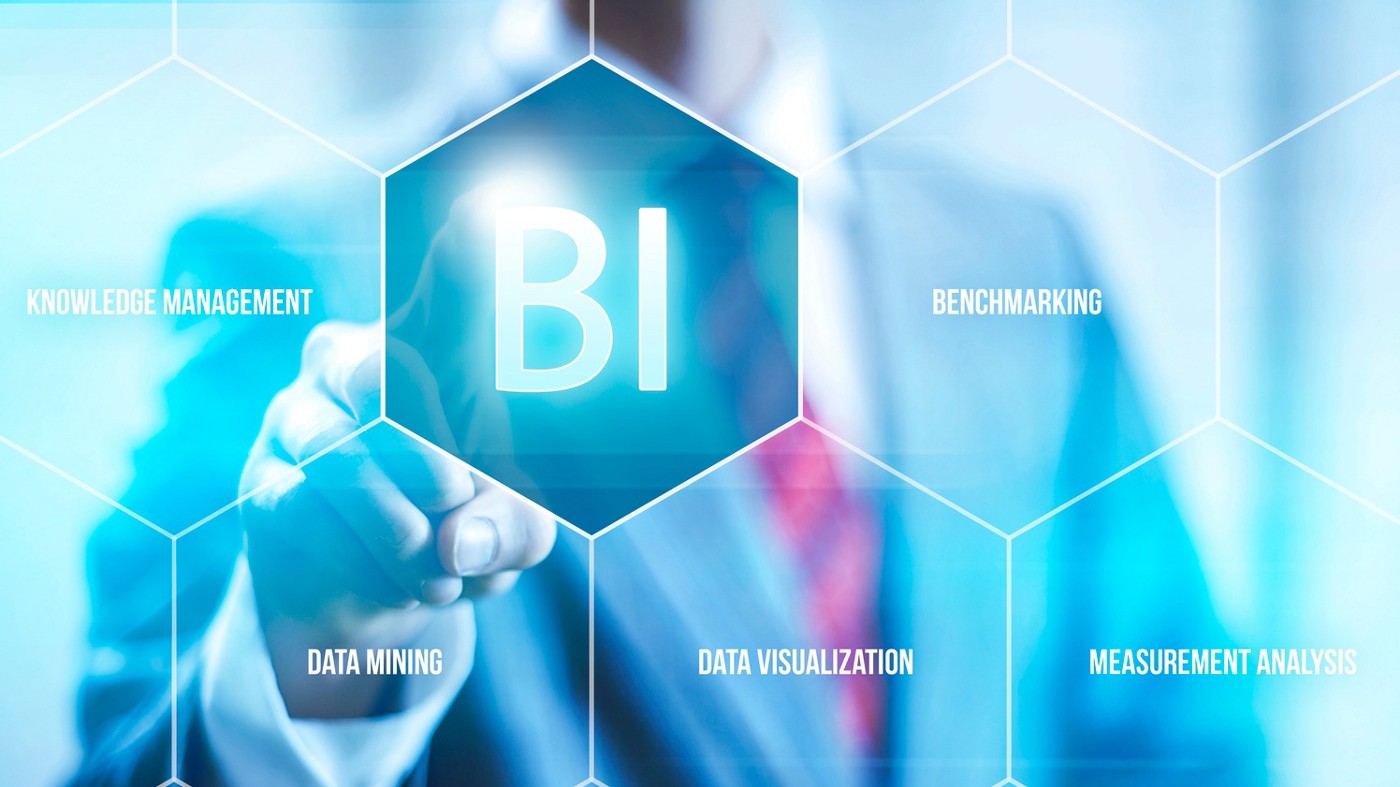Hello!
Business Intelligence refers to the technical capability of storing, analyzing, and retrieving corporate data. Benefits, software, and tools of BI.
 Business intelligence (BI), is the process and technical infrastructure that gathers, stores, analyzes, and interprets data generated by an organization’s operations. Also, BI can be used to refer to data mining, process analysis, and benchmarking as well as descriptive analytics.
Business intelligence (BI), is the process and technical infrastructure that gathers, stores, analyzes, and interprets data generated by an organization’s operations. Also, BI can be used to refer to data mining, process analysis, and benchmarking as well as descriptive analytics.
BI analyzes all data generated by a company and gives easy-to-digest reports and performance measurements. Trends are used to guide management decisions.
Key Takeaways
Business Intelligence This is the technical infrastructure for gathering, storing, and analyzing corporate data. BI analyzes data and generates insights that help managers make better decisions. Software companies create BI solutions for firms that want to make better use of their data.
 BI software and tools are also available in a variety of ways.
BI software and tools are also available in a variety of ways.
These include Tabling sheets and reporting/questing software as well as data visualization and data mining software (OLAP).
Self-service BI allows anyone to examine and access data without the need for technical knowledge.
Business Intelligence Understanding
The need for BI was based upon the assumption that managers who have incomplete or erroneous information will make poorer judgments than those with better data. This is known as “mall-in, waste-out” by financial model creators.
BI attempts to solve this problem by evaluating current data. This data is displayed on a dashboard that has fast metrics to help make smarter decisions.
Managers with incomplete or false information tend to make poorer decisions than those who have more information. Integration of BI solutions can be a profitable strategy for most firms.
Special Considerations
 BI must improve the quality, timeliness, as well as quantity of data to be useful.
BI must improve the quality, timeliness, as well as quantity of data to be useful.
These requirements include a variety of methods to collect information, verify for errors, and arrange the material so that an extensive analysis can be performed.
However, in practice, many enterprises have unstructured data or are difficult to collect and analyze in multiple formats. Software companies offer business intelligence solutions to optimize data gleaning. These software solutions are at the enterprise level and unify the data and analysis of a company.
While software solutions are constantly evolving, data scientists must still manage the tradeoffs between speed of reporting and depth.
Large data can provide valuable insights for firms, which has led to them scrambling to capture all the information.
Data analysts can often filter outsources to find data points that could indicate the health or inefficiency of an entire process. enterprise business. This will eliminate the need to analy capture and reformat, reduce analytical time, and increase reporting speed.
BI Tools and Software Types
 Software and tools for BI are available in many formats. Let’s quickly look at the most common BI solutions.
Software and tools for BI are available in many formats. Let’s quickly look at the most common BI solutions.
Controllers
The most widely used BI tools are Microsoft Excel and Google Docs by controllers.
Software for reporting
Reporting software is used to organize, filter, display, and report data.
Data visualization software converts large data sets into simple, visually appealing graphical representations for quick insights.
Data mining tools: Data mining software “mines” huge amounts of data to create designs using items like artificial intelligence, machine learning, and statistics. Online analytical processing (OLAP), OLAP allows users to view business sets from different perspectives.
Business information benefits
 There are many reasons companies use BI. This is used to support operations like recruitment, compliance and production. Business intelligence (BI) is an essential business value. Without better information, it is difficult to identify a business sector in which to work.
There are many reasons companies use BI. This is used to support operations like recruitment, compliance and production. Business intelligence (BI) is an essential business value. Without better information, it is difficult to identify a business sector in which to work.
BI offers many benefits, including faster, more precise reporting and analysis, improved data quality, employee satisfaction, lower expenses, higher business, and better business decision-making.
BI was created to assist companies in avoiding the “waste and wasted” problem that results from inadequate or faulty data analysis.
Let’s say you have a strong month-to-month growth in the region for different production schedules and sales at several beverage plants. You can offer additional shifts in real-time to meet the demand.
If sales are negatively affected by a colder summer, you can stop production immediately. If implemented, this production manipulation is a small example of how BI can increase profits and reduce expenses.
Examples of Business Intelligence
 Lowe’s Corp is the nation’s second-largest retail chain. It was one of the first major box users of BI tools. BI relies on tools to improve its supply chain, identify fraud and fix issues with collective delivery fees in its stores. Coca-Cola Bottling experienced a problem with daily manual reports. Access to operational and sales data was limited.
Lowe’s Corp is the nation’s second-largest retail chain. It was one of the first major box users of BI tools. BI relies on tools to improve its supply chain, identify fraud and fix issues with collective delivery fees in its stores. Coca-Cola Bottling experienced a problem with daily manual reports. Access to operational and sales data was limited.
The automated BI solution has been replaced by the manual process, which saved the company 260 hours a calendar year.
This is in addition to the six 40-hour workweek. The company team can now monitor key indicators like delivery operations, budget, profitability with just a few clicks.
Business Intelligence FAQs
What does Power Business Intelligence (BI) have?
 Microsoft’s business analytics software, Power BI, is a product. It allows individuals and companies to connect, model and view data in a scalable platform.
Microsoft’s business analytics software, Power BI, is a product. It allows individuals and companies to connect, model and view data in a scalable platform.
What’s BI Self-Service?
Self-service BI allows anyone with an interest in data analysis to have access to and analyze it. It gives everyone in an organization access to data. IT department.
Thank you!
Subscribe to our newsletter! Join us on social networks!
See you!






